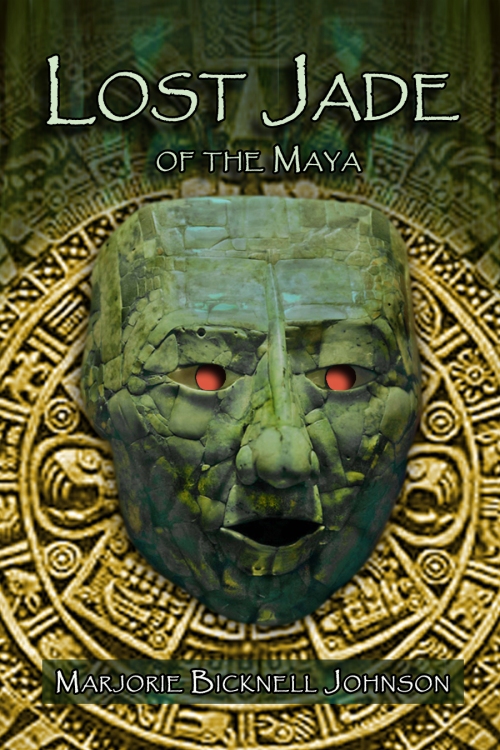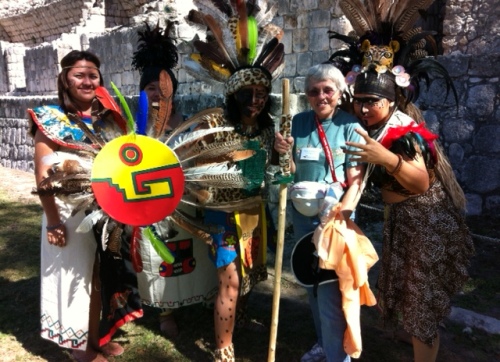If you are a math person, this will blow your mind.
How the Maya Constructed the Golden Rectangle
Marjorie Bicknell-Johnson
Maya priests and Greek Pythagoreans had much in common. The Maya believed that the
measuring of the square with a cord was the first action of the gods when they created the Cosmos and saw
the harmony of the Cosmos in their geometry. The Pythagoreans saw numbers as the ultimate reality and
found harmony in the mathematical movements of planets and stars.
Thousands of miles from Greece, the Maya used simple cords to lay the groundwork for buildings.
They used a cord to form a figure with four equal sides and then squared the angles by insuring that the
diagonals were equal. Each pyramid had a square base, the fundamental shape of Maya geometry and the
module from which all Creation was generated.
Like Pythagoras, the Maya saw harmony in the golden mean and developed a simple procedure for
creating that proportion by first forming a square. The builders halved the cord to find the center of a side
and stretched the cord from that center to a corner of the square as in the figure below. Then they swung the
cord down to measure out the baseline for a rectangle, the famous golden rectangle.
The golden mean, held in high regard by the Pythagoreans, appears in Greek art and architecture.
The golden mean, the ratio of length to width of the golden rectangle, has value (1 + √5)/2. If the width of
the rectangle above is 2, then the square has side 2 and half-side 1, and the sides of the central triangle are l,
2, and √5. The distance from the arrow to the right corner is √5 and the length of the rectangle is (1 + √5).
In the Popol Vuh, the Mayan book of the dawn of life and the glories of gods and kings, the Maya
described the god’s construction of a square as: “its four sections; its four cornerings; its measurings; its
four stakings.” They constructed a golden rectangle by: “its doubling-over cord measurement; its stretching
cord measurement; its womb sky; its womb earth; its four sides; its four corners as it is said.” The Maya
saw the proportions of the golden rectangle in nature and believed that houses built using the golden mean
are like flowers.
Mystics love the coming of the Mayan thirteenth Bak’tun on December 21, 2012 almost as much
as finding the golden ratio and the Fibonacci numbers in nature.

